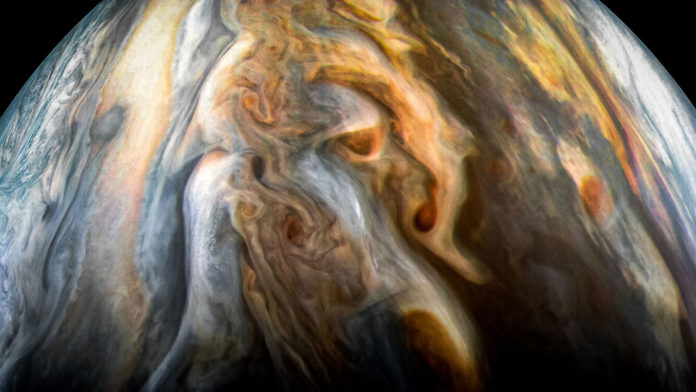Jupiter was likely the first planet to form, and it contains most of the gas and dust that wasn’t incorporated into the Sun. The leading theories about its formation rest on the amount of water the planet soaked up. Water abundance also has important implications for the gas giant’s meteorology and internal structure.
According to the first science results obtained from NASA’s Juno mission– at the equator, water makes up about 0.25% of the molecules in Jupiter’s atmosphere — almost three times that of the Sun.
These are also the first findings on the gas giant’s abundance of water since the agency’s 1995 Galileo mission suggested Jupiter might be extremely dry compared to the Sun. The results of the Galileo probe were inconclusive because the concentration of water was still increasing when the probe ceased sending data.
Cheng Li, a Juno scientist at the University of California, Berkeley, said, “We found the water in the equator to be greater than what the Galileo probe measured. Because the equatorial region is unique at Jupiter, we need to compare these results with how much water is in other regions.”
The data was gathered at 1.25 to 22 GHz from the Juno microwave radiometer, probing pressures of approximately 0.7 to 30 bar. The Microwave Radiometer takes advantage of the fact that water absorbs specific wavelengths of microwave radiation, the same trick used by microwave ovens to quickly heat food. The measured temperatures are used to constrain the amount of water and ammonia in the deep atmosphere, as both molecules absorb microwave radiation.

Juno’s 53-day orbit is slowly moving northward, as intended, bringing more of Jupiter’s northern hemisphere into sharper focus with each flyby. The science team is eager to see how atmospheric water content varies by latitude and region, as well as what the cyclone-rich poles can tell them about the gas giant’s global water abundance.
Juno’s 24th science flyby of Jupiter occurred on Feb 17. The next science flyby takes place on April 10, 2020. The findings are recently published in the journal Nature Astronomy.
